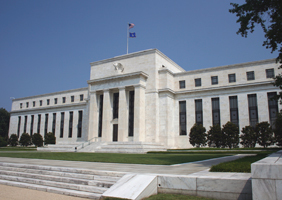Newsroom
Synthetic ID fraud mitigation discussed in latest Fed white paper
 Last week, the Federal Reserve released a new white paper on synthetic identity fraud in the U.S. payments system. The white paper is the latest in a series of publications about synthetic identity fraud and examines factors that influence synthetic identity fraud mitigation.
Last week, the Federal Reserve released a new white paper on synthetic identity fraud in the U.S. payments system. The white paper is the latest in a series of publications about synthetic identity fraud and examines factors that influence synthetic identity fraud mitigation.
In the report, the factors discussed that are found to influence fraud mitigation include:
- technological advancements, such as artificial intelligence and machine learning;
- regulatory or environmental influences; and
- information sharing and data integrity.
While the report suggests there is no single solution to completely mitigate this type of fraud, the Fed believes information sharing within and between organizations can help the industry draw connections between datasets to identify potential synthetic identities. The report mentions a credit union with a machine learning solution which flagged approximately 85% of credit applications originating from synthetic identities in early tests.
More information, as well as the two previously released whitepapers on this topic, can be found here.
NAFCU continues to lead on this issue, having served on both the Fed's Faster Payments and Secure Payments Task Forces. Additionally, NAFCU President and CEO Dan Berger previously met with Lael Brainard to encourage the Fed to play an operational role in a future, faster payments system.
The Fed has also established a Fraud Definitions Work Group, which is developing a more consistent and holistic view of the terminology used and other ongoing efforts to reduce fraud risk and advance the safety security and resiliency of the U.S. payments system. The group released a new fraud classification model in June.
As the Fed works to develop a real-time payments system – the FedNow Service – NAFCU has shared the ways in which credit unions and their members would benefit from affordable faster payments capabilities as it encouraged an accelerated launch.
In addition, NAFCU has also worked with member credit unions to understand what they would like out of the new system, and the association’s Cybersecurity and Payments Committee has engaged in early discussions with Fed representatives to discuss features and strategies that would promote adoption.
Share This
Related Resources
Add to Calendar 2024-06-26 14:00:00 2024-06-26 14:00:00 Gallagher Executive Compensation and Benefits Survey About the Webinar The webinar will share trends in executive pay increases, annual bonuses, and nonqualified benefit plans. Learn how to use the data charts as well as make this data actionable in order to improve your retention strategy. You’ll hear directly from the survey project manager on how to maximize the data points to gain a competitive edge in the market. Key findings on: Total compensation by asset size Nonqualified benefit plans Bonus targets and metrics Prerequisites Demographics Board expenses Watch On-Demand Web NAFCU digital@nafcu.org America/New_York public
Gallagher Executive Compensation and Benefits Survey
preferred partner
Gallagher
Webinar
Add to Calendar 2024-06-21 09:00:00 2024-06-21 09:00:00 The Evolving Role of the CISO in Credit Unions Listen On: Key Takeaways: [01:30] Being able to properly implement risk management decisions, especially in the cyber age we live in, is incredibly important so CISOs have a lot of challenges here. [02:27] Having a leader who can really communicate cyber risks and understand how ready that institution is to deal with cyber events is incredibly important. [05:36] We need to be talking about risk openly. We need to be documenting and really understanding what remediating risk looks like and how you do that strategically. [16:38] Governance, risk, compliance, and adherence to regulatory controls are all being looked at much more closely. You are also seeing other technology that is coming into the fold directly responsible for helping CISOs navigate those waters. [18:28] The reaction from the governing bodies is directly related to the needs of the position. They’re trying to help make sure that we are positioned in a way that gets us the most possibility of success, maturing our postures and protecting the institutions. Web NAFCU digital@nafcu.org America/New_York public
The Evolving Role of the CISO in Credit Unions
preferred partner
DefenseStorm
Podcast
AI in Action: Redefining Disaster Preparedness and Financial Security
Strategy
preferred partner
Allied Solutions
Blog Post
Get daily updates.
Subscribe to NAFCU today.
